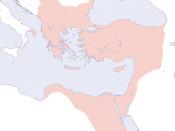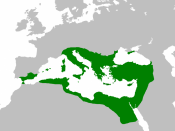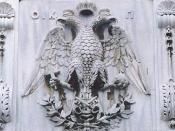Eastern Roman Empire, more known as the Byzantine Empire, was able to survive for a thousand years after the collapse of the west. In 476 A.D., the Western Roman Empire ceased to exist. Political, military and economic reasons can explain the survival of Byzantine.
Political. Zeno I ruled the East as the empire in the West finally fell in 476. Zeno negotiated with the Goths, putting an end to their threats to the East but leaving them in control of the West. This ensured temporary safety. In 527, Justinian I became the Emperor. His powerful and centralised leadership ensured that immediate changes were possible on short notice in case of an emergency. Justinian updated the ancient Roman legal code in the new Corpus Juris Civilis(Justinian's Code). Under his reign, Hagia Sofia, a magnificant Church, was constructed in 537 symbolizing the prosperity of the empire. This church would become the centre of Byzantine religious life and the centre of the Eastern Orthodox form of Christianity.
Byzantines had a clever diplomocy towards their neighbors. They would use spies and set their neighbors against each other, which would weaken them, thus endining the threat of invasion and transforming them into an easy target to invade. This ultimatly led to the further expansion of the empire. Arranged marriages were often used to make alies.
Military: Under the brilliant leadership of general Belasirius, the Byzantine Empire even regained some of the lost Roman provinces in the west. He roconquered much of Italy, Spain, and north Africa, also puting down the Nika Rebellion. Armies were very well organised and even had training manuals. Soldiers were grunted medical benefits and received land grants, making the job wanted and highly respected. Constantinople was highly fortified and the navy used advanced technologies, such as the "Greek Fire," components...



Gr8
nice intro and conclusion, lack in body, however very effective..
3 out of 3 people found this comment useful.